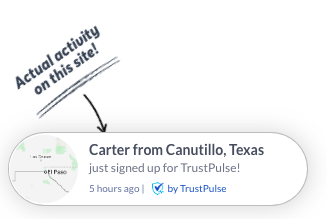Today I’d like to talk about peer pressure or lack thereof. What do you do when a potential new customer really doesn’t know you at all?
Much like an introduction by a friend or a spot on the New York Times Best Seller List a little social proof can go a long way.
Social proof is often a cue we seek when close to purchasing. It can have a strong impact on conversions.
Sharing testimonials on your website seems like an obvious addition. Historically this has been in the form of a page with short snippets of support from previous ‘customers’. We’ve all see them right?
“Nick’s Brilliant, I highly recommend you hire or run with him.”
Eve Angelist
With social media and specifically LinkedIn it is now very easy to get verifiable real human recommendations. Including links to profiles puts them on the line and really validates the authors message. Few of us will take the time to verify and approach those recommending a product, but we take the fact that there are recommendations by real people as a compelling reason to buy.
Trustpulse have a nifty offering that allows you to serve up recent purchases of your product in real time. A brilliant form of recent relevant social proof.

Online there are also softer cues that we can use to indicate social proof. As much as a stock left counter is useful in indicating scarcity, it can also act as social proof. Indicating that there are 10 little black dresses left of an exclusive 30 shows that they are both scarce and popular. This can also be translated to the physical bricks and mortar world as well.
C&A the Brazilian retailer set up one of their São Paulo shops to help customers decide which dress they like by seeing who else ‘likes’ it.
They put their latest collection on Facebook. There, users could LIKE items they preferred. These virtual LIKES were tallied in real time on the hangers of the items in the store. The hype around the range saw it flying off the hangers.
So with the proof that others like it, how can we tell if it’s priced right?
Anchoring a price has been common practice since commerce began.
If we think of bartering and haggling in markets, the seller will often start out with a high point to anchor the price discussion. We perceive value and then feel better when we can get it for a lower cost. The act of adding a sticker for a higher price and crossing it out has the same effect.
And if you doubt the power of anchoring prices – check out some old episodes of the price is right. When an unrealistically high price is presented, the majority of contestants will still gravitate to a price higher than the correct one.
Anchoring our ideas of a fair price from historical data can also be dangerous. If heads comes up 6 times in a row, the next throw is still a 50:50 bet. This is something that investors need to be wary of. Their analysis and historic data may very well anchor their opinions despite new metrics coming into play.
Saas and anchoring
Anchoring plays a key role for many SaaS companies in persuading clients that a brand new service is worthy their investment.
By displaying three or four pricing options you immediately consider the second option more affordable when framed between lower and upper limits. When we can see significant value in moving up from the freemium plan – and that it’s not as expensive as the enterprise version – we feel more comfortable signing up. Adding a most popular ribbon to the middle plan also helps.
In a more familiar setting, Tesco, (Countdown, and many other supermarkets) have created a similar three tiered approach with their everyday value, standard and finest ranges.
So how could you leverage these two in your business?
- If you are competing on price – try using feature comparison tables with competitors.
- Consider creating sub-brands or three tiered service or product offerings to encourage sales of your preferred item.
- Add live stock counts or like counts to your product pages
- Add recommendation requests to your post purchase feedback questionnaire
- Ensure your copy and tone of voice align with your goals
- Consistency in authoritative, precise copy and values with decimal points can make a user trust a source of information more.
- “About half of Nick’s runs are over 5k”, is less believable than
- “Nick’s average daily run is 9.61Km in 2022”.
- The anchoring heuristic has also been linked to the way someone feels. In controlled research, managers were asked to interview job candidates and rate their ability. They did so after their own performance reviews. Managers that had received positive performance reviews, have higher ratings to candidates than those who had just had their ability questioned.
- Consistency in authoritative, precise copy and values with decimal points can make a user trust a source of information more.
As a final little brain teaser to highlight the power of anchoring. Without Googling it – if I told you the average man lives until 80 in India how old do you think Gandhi lived to be? Chances are your estimate will be higher than if I told you the average age is 65.

